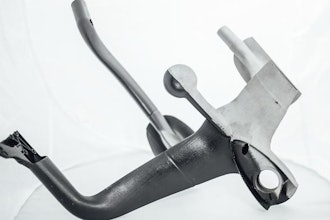
As of 2019, the global battery marketplace was valued at $108.4 billion, and the lithium-ion battery market was appraised at $41.1 billion. The entire marketplace is expected to grow by a CAGR of 12.3 percent to $116.6 billion by 2030 and is predicted to expand at a compound annual growth rate (CAGR) of 14.1 percent from 2020 to 2027.
The rapid growth in demand for lithium-ion batteries is driven by increased automotive applications in electric vehicles (EVs) and the exploding popularity of portable consumer electronics such as smartphones, tablets and wearable devices.
According to a McKinsey & Company Report, the demand for EVs will soon exceed current battery production capacity. Globally, the number of EVs exceeded ten million in 2020, fueled by evolving environmental regulations, higher OEM sustainability targets and increased consumer demand. As more EVs are produced, the demand for batteries will grow 30 percent year-over-year, reaching 3,900 (GWh)2 in 2030. Established battery manufacturers and start-ups have announced plans to boost capacity to only 2,900 GWh by 2030.
Increased Production Efficiency
Unfortunately, worldwide battery production will soon drop below the predicted demand. The solution: battery manufacturers must streamline manufacturing methods and double current production levels in the next five years. To accomplish this goal, they will need to implement newer, more efficient methods. A quick review of the Four Ms of Manufacturing—manpower, machines, methods, and materials—provides insight into how to achieve this goal.
- Manpower: It is essential to develop the talent to meet the manpower demand in battery manufacturing. A properly trained workforce understands the nuances of safe battery handling during manufacturing and can also flag issues related to battery manufacturing on the fly.
- Machines: Having high quality properly maintained equipment can keep the manufacturing process variation under control creating quality product.
- Methods: Determine the right mix of methods. Manual processes vs. automation can play a significant role in process variation.
- Materials: Raw materials chosen for manufacturing play a very critical role. In the long run, inadequate quality control of materials can lead to unpredictable battery behavior, affecting overall product quality.
The Importance of Data Gathering
Currently manufacturers rely upon mechanical data gathering systems to collect the information needed to control assembly processes. While these systems offer low start-up costs, they may not identify part misplacement in critical assembly stages. These out-of-position pieces can interrupt the manufacturing flow and create end-product quality issues or poor overall yield.
Ultimately, the worst possible scenario is a single battery module, not assembled correctly, that overheats during use due to a faulty connection of the busbar, which ignites the battery and an entire EV. Mechanical systems also do not collect data nor allow for ongoing process improvement. This impacts product quality and increases scrap. They also do not provide the flexibility needed to quickly adapt to new products without significant expense.
There is an alternative: the use of optical systems to locate the object on which processes will be performed, that boosts production, improves quality, enhances product safety, and collects data that can provide continuous improvement. While initial optical sensor implementation costs more than mechanical systems, optical sensors provide a clear pathway to meet the rising demand for newer, better batteries.
Optical systems differ from mechanical systems. They use optical sensors, cameras, and 3D line scanners to “see” and establish part location instead of simple mechanical measurements. This enhances the equipment’s ability to know where to assemble components or place a label, regardless of where the battery block is located.
The speed and quality of battery pack assembly are influenced by the precision of the measurement and assembly methods used in the process. The quality of assembly in EV battery production is the cumulative impact of part tolerances, assembly features and part quality.
Optical systems improve the ability of equipment to complete a specified process in the exact location required, even if the battery block is out of position. Optical systems adapt to each piece in the manufacturing process and verify accuracy before, during and after a process. This reduces the need for human inspection, lowers cost and boosts quality.
Because optical positioning systems rely upon images, they can quickly be changed to produce new battery form factor faster and at lower cost than changing a mechanical system. In addition, optical systems collect ongoing data that can be used to improve manufacturing tolerances and product quality, while reducing down time during product line changes.
Optical positioning systems cost more to implement. However, based upon the rapid growth and diversification of the battery industry, their long-term benefits, combined with the potential to boost production, quality, and end-product safety, while quickly adapting to new products, justifies the investment.
A practical example of the benefit of optical systems can be seen by observing a simple task—the placement of the battery label. Optical positioning systems will identify the location of the battery block and create a virtual datum, communicate the location to the label applicator which can then adjust, using X-Y servo controls, to ensure exact placement. If multiple block placements are grossly out of position, optical systems can be designed to shut down production to prevent serious errors further down the line.
Battery management unit (BMU) placement and welding on cell terminals require precise positioning. Optical systems can play a very important role in controlling process variation. Optical processes can be applied to any process that requires accurate positioning of the working block.
Looking Ahead
The demand for high quality lithium-ion batteries will soon exceed worldwide production capacity. Streamlining and enhancing manufacturing production methods is the ideal way to boost production, improve quality, lower cost, and meet rapidly rising demand.
While mechanical systems cost less up-front and perform well, optical systems provide more manufacturing finesse and the ability to quickly adapt to new manufacturing requirements. Optical systems can identify assembly problems before they create downstream quality/safety issues and provide the ability to constantly improve tolerances and ultimately boost quality.
Ashwin Zalte is an industrial engineer and technical program manager. He has more than 15 years’ experience in working with a major consumer electronics manufacturing firm. He manages NPI projects through all developmental phases to mass production, developing supplier quality and leading cross functional teams for issue resolution. He holds a Master of Science, Industrial Engineering from Virginia Tech. For more information, please contact [email protected].






















